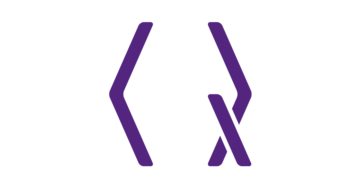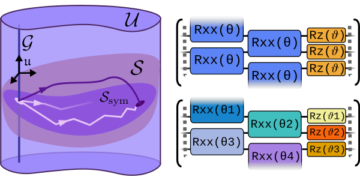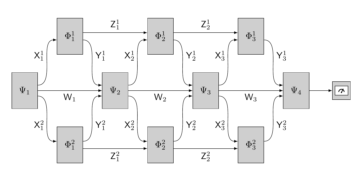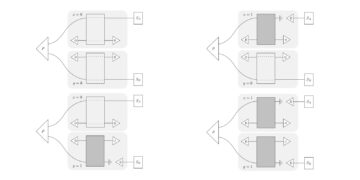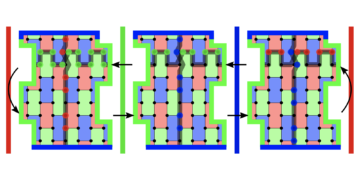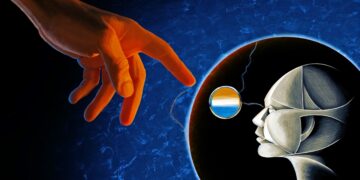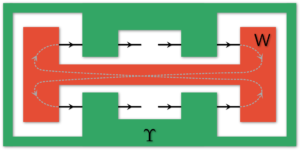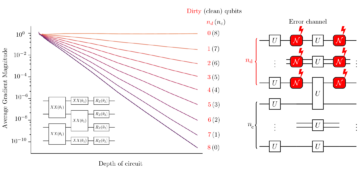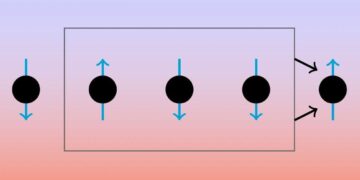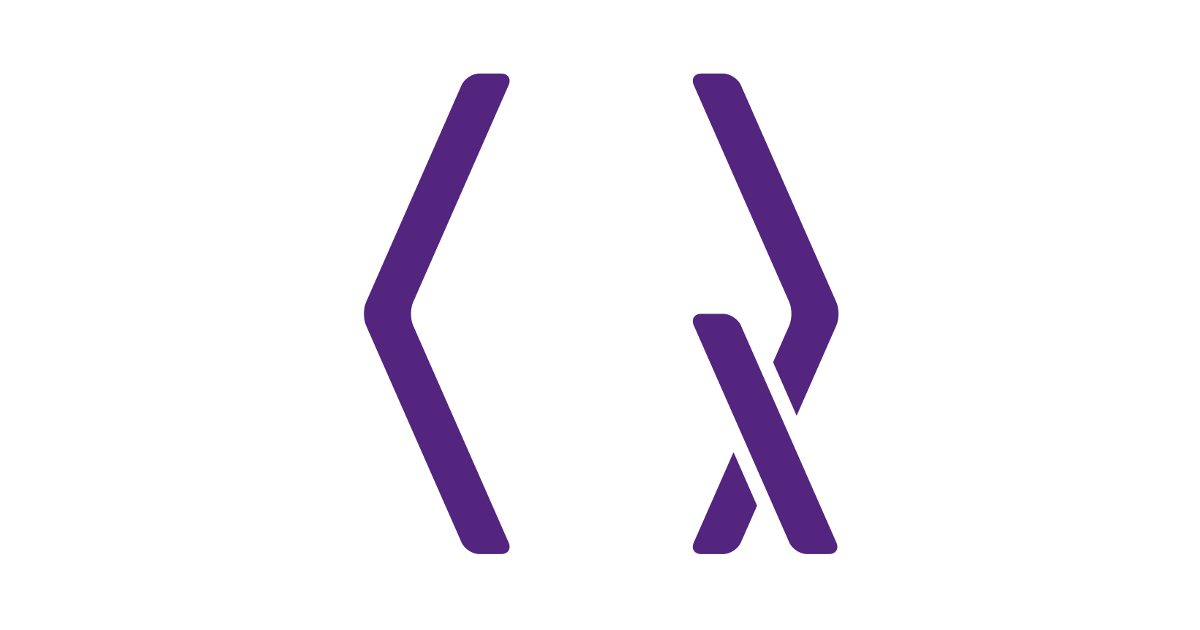
1Department of Electrical & Computer Engineering, National University of Singapore, Singapore
2Centre for Quantum Technologies, National University of Singapore, Singapore
3Institute for Quantum Computing and Department of Physics and Astronomy, University of Waterloo, Canada
4Department of Computer Science, National University of Singapore, Singapore
5Global Technology Applied Research, JPMorgan Chase & Co, Singapore
Find this paper interesting or want to discuss? Scite or leave a comment on SciRate.
Abstract
Device-independent quantum key distribution (DI-QKD) is often seen as the ultimate key exchange protocol in terms of security, as it can be performed securely with uncharacterised black-box devices. The advent of DI-QKD closes several loopholes and side-channels that plague current QKD systems. While implementing DI-QKD protocols is technically challenging, there have been recent proof-of-principle demonstrations, resulting from the progress made in both theory and experiments. In this review, we will provide an introduction to DI-QKD, an overview of the related experiments performed, and the theory and techniques required to analyse its security. We conclude with an outlook on future DI-QKD research.
► BibTeX data
► References
[1] A. Acín, N. Brunner, N. Gisin, S. Massar, S. Pironio, and V. Scarani. Device-independent security of quantum cryptography against collective attacks. Phys. Rev. Lett., 98: 230501, Jun 2007. 10.1103/PhysRevLett.98.230501. URL https://doi.org/10.1103/PhysRevLett.98.230501.
https://doi.org/10.1103/PhysRevLett.98.230501
[2] R. Ahlswede and I. Csiszar. Common randomness in information theory and cryptography. i. secret sharing. IEEE Transactions on Information Theory, 39 (4): 1121–1132, 1993. 10.1109/18.243431.
https://doi.org/10.1109/18.243431
[3] R. Arnon-Friedman and F. Leditzky. Upper bounds on device-independent quantum key distribution rates and a revised Peres conjecture. IEEE Transactions on Information Theory, 67 (10): 6606–6618, Oct 2021. ISSN 1557-9654. 10.1109/TIT.2021.3086505.
https://doi.org/10.1109/TIT.2021.3086505
[4] R. Arnon-Friedman, F. Dupuis, O. Fawzi, R. Renner, and T. Vidick. Practical device-independent quantum cryptography via entropy accumulation. Nature Communications, 9 (459): 1–11, 2018. 10.1038/s41467-017-02307-4. URL https://doi.org/10.1038/s41467-017-02307-4.
https://doi.org/10.1038/s41467-017-02307-4
[5] R. Arnon-Friedman, R. Renner, and T. Vidick. Simple and tight device-independent security proofs. SIAM Journal on Computing, 48 (1): 181–225, 2019. 10.1137/18M1174726. URL https://doi.org/10.1137/18M1174726.
https://doi.org/10.1137/18M1174726
[6] J. Bae and A. Acín. Key distillation from quantum channels using two-way communication protocols. Phys. Rev. A, 75: 012334, Jan 2007. 10.1103/PhysRevA.75.012334. URL https://doi.org/10.1103/PhysRevA.75.012334.
https://doi.org/10.1103/PhysRevA.75.012334
[7] J. Barrett, L. Hardy, and A. Kent. No signaling and quantum key distribution. Phys. Rev. Lett., 95: 010503, Jun 2005. 10.1103/PhysRevLett.95.010503. URL https://doi.org/10.1103/PhysRevLett.95.010503.
https://doi.org/10.1103/PhysRevLett.95.010503
[8] J. Barrett, R. Colbeck, and A. Kent. Memory attacks on device-independent quantum cryptography. Phys. Rev. Lett., 110: 010503, Jan 2013. 10.1103/PhysRevLett.110.010503. URL https://doi.org/10.1103/PhysRevLett.110.010503.
https://doi.org/10.1103/PhysRevLett.110.010503
[9] J. S. Bell. On the Einstein-Podolsky-Rosen paradox. Physics, 1 (3): 195, 1964.
[10] J. S. Bell. Speakable and unspeakable in quantum mechanics: Collected papers on quantum philosophy. Cambridge University Press, 2004.
[11] M. Ben-Or, M. Horodecki, D. W. Leung, D. Mayers, and J. Oppenheim. The universal composable security of quantum key distribution. In Theory of Cryptography, pages 386–406. Springer Berlin Heidelberg, 2005. 10.1007/978-3-540-30576-7_21. URL https://doi.org/10.1007/978-3-540-30576-7_21.
https://doi.org/10.1007/978-3-540-30576-7_21
[12] C. H. Bennett and G. Brassard. Quantum cryptography. In Proc. IEEE Int. Conf. on Computers, Systems and Signal Processing, Bangalore, India, pages 175–179, 1984.
[13] C. H. Bennett, G. Brassard, and N. D. Mermin. Quantum cryptography without Bell’s theorem. Phys. Rev. Lett., 68: 557–559, Feb 1992. 10.1103/PhysRevLett.68.557. URL https://doi.org/10.1103/PhysRevLett.68.557.
https://doi.org/10.1103/PhysRevLett.68.557
[14] R. Bhavsar, S. Ragy, and R. Colbeck. Improved device-independent randomness expansion rates from tight bounds on the two sided randomness using CHSH tests. arXiv preprint arXiv:2103.07504, 2021. 10.48550/arXiv.2103.07504. URL https://doi.org/10.48550/arXiv.2103.07504.
https://doi.org/10.48550/arXiv.2103.07504
arXiv:2103.07504
[15] P. Bierhorst, E. Knill, S. Glancy, Y. Zhang, A. Mink, S. Jordan, A. Rommal, Y.-K. Liu, B. Christensen, S. W. Nam, et al. Experimentally generated randomness certified by the impossibility of superluminal signals. Nature, 556 (7700): 223–226, 2018. 10.1038/s41586-018-0019-0. URL https://doi.org/10.1038/s41586-018-0019-0.
https://doi.org/10.1038/s41586-018-0019-0
[16] C. Branciard, E. G. Cavalcanti, S. P. Walborn, V. Scarani, and H. M. Wiseman. One-sided device-independent quantum key distribution: Security, feasibility, and the connection with steering. Phys. Rev. A, 85: 010301, Jan 2012. 10.1103/PhysRevA.85.010301. URL https://doi.org/10.1103/PhysRevA.85.010301.
https://doi.org/10.1103/PhysRevA.85.010301
[17] S. L. Braunstein and S. Pirandola. Side-channel-free quantum key distribution. Phys. Rev. Lett., 108: 130502, Mar 2012. 10.1103/PhysRevLett.108.130502. URL https://doi.org/10.1103/PhysRevLett.108.130502.
https://doi.org/10.1103/PhysRevLett.108.130502
[18] J. Briët and P. Harremoës. Properties of classical and quantum Jensen-Shannon divergence. Physical Review A, 79 (5), May 2009. 10.1103/physreva.79.052311. URL https://doi.org/10.1103/physreva.79.052311.
https://doi.org/10.1103/physreva.79.052311
[19] P. Brown, H. Fawzi, and O. Fawzi. Computing conditional entropies for quantum correlations. Nature Communications, 12 (575): 1–12, 2021a. 10.1038/s41467-020-20018-1. URL https://doi.org/10.1038/s41467-020-20018-1.
https://doi.org/10.1038/s41467-020-20018-1
[20] P. Brown, H. Fawzi, and O. Fawzi. Device-independent lower bounds on the conditional von Neumann entropy. arXiv preprint arXiv:2106.13692, 2021b. 10.48550/arXiv.2106.13692. URL https://arxiv.org/abs/2106.13692.
https://doi.org/10.48550/arXiv.2106.13692
arXiv:2106.13692
[21] N. Brunner, D. Cavalcanti, S. Pironio, V. Scarani, and S. Wehner. Bell nonlocality. Rev. Mod. Phys., 86: 419–478, Apr 2014. 10.1103/RevModPhys.86.419. URL https://doi.org/10.1103/RevModPhys.86.419.
https://doi.org/10.1103/RevModPhys.86.419
[22] J. L. Carter and M. N. Wegman. Universal classes of hash functions. Journal of Computer and System Sciences, 18 (2): 143–154, 1979. ISSN 0022-0000. https://doi.org/10.1016/0022-0000(79)90044-8. URL https://www.sciencedirect.com/science/article/pii/0022000079900448.
https://doi.org/10.1016/0022-0000(79)90044-8
https://www.sciencedirect.com/science/article/pii/0022000079900448
[23] H. F. Chau. Practical scheme to share a secret key through a quantum channel with a 27.6% bit-error rate. Phys. Rev. A, 66: 060302, Dec 2002. 10.1103/PhysRevA.66.060302. URL https://doi.org/10.1103/PhysRevA.66.060302.
https://doi.org/10.1103/PhysRevA.66.060302
[24] M. Christandl and R. Ferrara. Private states, quantum data hiding, and the swapping of perfect secrecy. Phys. Rev. Lett., 119: 220506, Nov 2017. 10.1103/PhysRevLett.119.220506. URL https://doi.org/10.1103/PhysRevLett.119.220506.
https://doi.org/10.1103/PhysRevLett.119.220506
[25] M. Christandl, A. Ekert, M. Horodecki, P. Horodecki, J. Oppenheim, and R. Renner. Unifying classical and quantum key distillation. In S. P. Vadhan, editor, Theory of Cryptography, pages 456–478, Berlin, Heidelberg, 2007. Springer Berlin Heidelberg. ISBN 978-3-540-70936-7.
[26] M. Christandl, R. Ferrara, and K. Horodecki. Upper bounds on device-independent quantum key distribution. Phys. Rev. Lett., 126: 160501, Apr 2021. 10.1103/PhysRevLett.126.160501. URL https://doi.org/10.1103/PhysRevLett.126.160501.
https://doi.org/10.1103/PhysRevLett.126.160501
[27] J. F. Clauser, M. A. Horne, A. Shimony, and R. A. Holt. Proposed experiment to test local hidden-variable theories. Phys. Rev. Lett., 23: 880–884, Oct 1969. 10.1103/PhysRevLett.23.880. URL https://doi.org/10.1103/PhysRevLett.23.880.
https://doi.org/10.1103/PhysRevLett.23.880
[28] A. Coladangelo and J. Stark. Unconditional separation of finite and infinite-dimensional quantum correlations. arXiv preprint arXiv:1804.05116, 2018. 10.48550/arXiv.1804.05116. URL https://doi.org/10.48550/arXiv.1804.05116.
https://doi.org/10.48550/arXiv.1804.05116
arXiv:1804.05116
[29] P. J. Coles, E. M. Metodiev, and N. Lütkenhaus. Numerical approach for unstructured quantum key distribution. Nature Communications, 7 (11712): 1–9, 2016. 10.1038/ncomms11712. URL https://doi.org/10.1038/ncomms11712.
https://doi.org/10.1038/ncomms11712
[30] P. J. Coles, M. Berta, M. Tomamichel, and S. Wehner. Entropic uncertainty relations and their applications. Rev. Mod. Phys., 89: 015002, Feb 2017. 10.1103/RevModPhys.89.015002. URL https://doi.org/10.1103/RevModPhys.89.015002.
https://doi.org/10.1103/RevModPhys.89.015002
[31] I. Csiszar and J. Korner. Broadcast channels with confidential messages. IEEE Transactions on Information Theory, 24 (3): 339–348, 1978. 10.1109/TIT.1978.1055892.
https://doi.org/10.1109/TIT.1978.1055892
[32] M. Curty and H.-K. Lo. Foiling covert channels and malicious classical post-processing units in quantum key distribution. npj Quantum Information, 5 (14): 1–11, 2019. 10.1038/s41534-019-0131-5.
https://doi.org/10.1038/s41534-019-0131-5
[33] M. Curty and T. Moroder. Heralded-qubit amplifiers for practical device-independent quantum key distribution. Phys. Rev. A, 84: 010304, Jul 2011. 10.1103/PhysRevA.84.010304. URL https://doi.org/10.1103/PhysRevA.84.010304.
https://doi.org/10.1103/PhysRevA.84.010304
[34] S. Datta, H. Kampermann, and D. Bruß. Device-independent secret key rates via a post-selected Bell inequality. arXiv preprint arXiv:2111.04482, 2021. 10.48550/arXiv.2111.04482. URL https://doi.org/10.48550/arXiv.2111.04482.
https://doi.org/10.48550/arXiv.2111.04482
arXiv:2111.04482
[35] P. J. Davis and P. Rabinowitz. Methods Of Numerical Integration. Academic Press, 2nd edition, 1984. ISBN 9781483264288.
[36] I. Devetak and A. Winter. Distillation of secret key and entanglement from quantum states. Proceedings of the Royal Society A: Mathematical, Physical and Engineering Sciences, 461 (2053): 207–235, 2005. 10.1098/rspa.2004.1372. URL https://doi.org/10.1098/rspa.2004.1372.
https://doi.org/10.1098/rspa.2004.1372
[37] P. Diviánszky, E. Bene, and T. Vértesi. Qutrit witness from the grothendieck constant of order four. Phys. Rev. A, 96: 012113, Jul 2017. 10.1103/PhysRevA.96.012113. URL https://doi.org/10.1103/PhysRevA.96.012113.
https://doi.org/10.1103/PhysRevA.96.012113
[38] F. Dupuis and O. Fawzi. Entropy accumulation with improved second-order term. IEEE Transactions on Information Theory, 65 (11): 7596–7612, 2019. 10.1109/TIT.2019.2929564. URL https://doi.org/10.1109/TIT.2019.2929564.
https://doi.org/10.1109/TIT.2019.2929564
[39] F. Dupuis, O. Fawzi, and R. Renner. Entropy accumulation. Communications in Mathematical Physics, 379 (3): 867–913, 2020. 10.1007/s00220-020-03839-5. URL https://doi.org/10.1007/s00220-020-03839-5.
https://doi.org/10.1007/s00220-020-03839-5
[40] A. K. Ekert. Quantum cryptography based on Bell’s theorem. Phys. Rev. Lett., 67: 661–663, Aug 1991. 10.1103/PhysRevLett.67.661. URL https://doi.org/10.1103/PhysRevLett.67.661.
https://doi.org/10.1103/PhysRevLett.67.661
[41] M. Farkas, M. Balanzó-Juandó, K. Łukanowski, J. Kołodyński, and A. Acín. Bell nonlocality is not sufficient for the security of standard device-independent quantum key distribution protocols. Phys. Rev. Lett., 127: 050503, Jul 2021. 10.1103/PhysRevLett.127.050503. URL https://doi.org/10.1103/PhysRevLett.127.050503.
https://doi.org/10.1103/PhysRevLett.127.050503
[42] T. Fritz. Tsirelson’s problem and Kirchberg’s conjecture. Reviews in Mathematical Physics, 24 (05): 1250012, 2012. 10.1142/S0129055X12500122. URL https://doi.org/10.1142/S0129055X12500122.
https://doi.org/10.1142/S0129055X12500122
[43] N. Gisin, S. Fasel, B. Kraus, H. Zbinden, and G. Ribordy. Trojan-horse attacks on quantum-key-distribution systems. Phys. Rev. A, 73: 022320, Feb 2006. 10.1103/PhysRevA.73.022320. URL https://doi.org/10.1103/PhysRevA.73.022320.
https://doi.org/10.1103/PhysRevA.73.022320
[44] N. Gisin, S. Pironio, and N. Sangouard. Proposal for implementing device-independent quantum key distribution based on a heralded qubit amplifier. Phys. Rev. Lett., 105: 070501, Aug 2010. 10.1103/PhysRevLett.105.070501. URL https://doi.org/10.1103/PhysRevLett.105.070501.
https://doi.org/10.1103/PhysRevLett.105.070501
[45] M. Giustina, M. A. M. Versteegh, S. Wengerowsky, J. Handsteiner, A. Hochrainer, K. Phelan, F. Steinlechner, J. Kofler, J.-A. Larsson, C. Abellán, W. Amaya, V. Pruneri, M. W. Mitchell, J. Beyer, T. Gerrits, A. E. Lita, L. K. Shalm, S. W. Nam, T. Scheidl, R. Ursin, B. Wittmann, and A. Zeilinger. Significant-loophole-free test of Bell’s theorem with entangled photons. Phys. Rev. Lett., 115: 250401, Dec 2015. 10.1103/PhysRevLett.115.250401. URL https://doi.org/10.1103/PhysRevLett.115.250401.
https://doi.org/10.1103/PhysRevLett.115.250401
[46] K. T. Goh, J.-D. Bancal, and V. Scarani. Measurement-device-independent quantification of entanglement for given Hilbert space dimension. New Journal of Physics, 18 (4): 045022, Apr 2016. 10.1088/1367-2630/18/4/045022. URL https://doi.org/10.1088/1367-2630/18/4/045022.
https://doi.org/10.1088/1367-2630/18/4/045022
[47] J. R. Gonzales-Ureta, A. Predojević, and A. Cabello. Device-independent quantum key distribution based on bell inequalities with more than two inputs and two outputs. Phys. Rev. A, 103: 052436, May 2021. 10.1103/PhysRevA.103.052436. URL https://doi.org/10.1103/PhysRevA.103.052436.
https://doi.org/10.1103/PhysRevA.103.052436
[48] D. Gottesman and H.-K. Lo. Proof of security of quantum key distribution with two-way classical communications. IEEE Transactions on Information Theory, 49 (2): 457–475, 2003. 10.1109/TIT.2002.807289. URL https://doi.org/10.1109/TIT.2002.807289.
https://doi.org/10.1109/TIT.2002.807289
[49] F. Grasselli, G. Murta, H. Kampermann, and D. Bruß. Entropy bounds for multiparty device-independent cryptography. PRX Quantum, 2: 010308, Jan 2021. 10.1103/PRXQuantum.2.010308. URL https://doi.org/10.1103/PRXQuantum.2.010308.
https://doi.org/10.1103/PRXQuantum.2.010308
[50] S. J. Harris and S. K. Pandey. Entanglement and Non-Locality (lecture notes), 2016. URL https://www.math.uwaterloo.ca/ vpaulsen/EntanglementAndNonlocality_LectureNotes_7.pdf.
https://www.math.uwaterloo.ca/~vpaulsen/EntanglementAndNonlocality_LectureNotes_7.pdf
[51] B. Hensen, H. Bernien, A. E. Dréau, A. Reiserer, N. Kalb, M. S. Blok, J. Ruitenberg, R. F. Vermeulen, R. N. Schouten, C. Abellán, et al. Loophole-free Bell inequality violation using electron spins separated by 1.3 kilometres. Nature, 526 (7575): 682–686, 2015. 10.1038/nature15759. URL https://doi.org/10.1038/nature15759.
https://doi.org/10.1038/nature15759
[52] M. Ho, P. Sekatski, E. Y.-Z. Tan, R. Renner, J.-D. Bancal, and N. Sangouard. Noisy preprocessing facilitates a photonic realization of device-independent quantum key distribution. Phys. Rev. Lett., 124: 230502, Jun 2020. 10.1103/PhysRevLett.124.230502. URL https://doi.org/10.1103/PhysRevLett.124.230502.
https://doi.org/10.1103/PhysRevLett.124.230502
[53] K. Horodecki, M. Horodecki, P. Horodecki, and J. Oppenheim. General paradigm for distilling classical key from quantum states. IEEE Transactions on Information Theory, 55 (4): 1898–1929, 2009. 10.1109/TIT.2008.2009798.
https://doi.org/10.1109/TIT.2008.2009798
[54] D. Hucul, I. V. Inlek, G. Vittorini, C. Crocker, S. Debnath, S. M. Clark, and C. Monroe. Modular entanglement of atomic qubits using photons and phonons. Nature Physics, 11 (1): 37–42, 2015. 10.1038/nphys3150. URL https://doi.org/10.1038/nphys3150.
https://doi.org/10.1038/nphys3150
[55] P. C. Humphreys, N. Kalb, J. P. Morits, R. N. Schouten, R. F. Vermeulen, D. J. Twitchen, M. Markham, and R. Hanson. Deterministic delivery of remote entanglement on a quantum network. Nature, 558 (7709): 268–273, 2018. 10.1038/s41586-018-0200-5. URL https://doi.org/10.1038/s41586-018-0200-5.
https://doi.org/10.1038/s41586-018-0200-5
[56] M. Ioannou, M. A. Pereira, D. Rusca, F. Grünenfelder, A. Boaron, M. Perrenoud, A. A. Abbott, P. Sekatski, J.-D. Bancal, N. Maring, H. Zbinden, and N. Brunner. Receiver-device-independent quantum key distribution. Quantum, 6: 718, May 2022a. ISSN 2521-327X. 10.22331/q-2022-05-24-718. URL https://doi.org/10.22331/q-2022-05-24-718.
https://doi.org/10.22331/q-2022-05-24-718
[57] M. Ioannou, P. Sekatski, A. A. Abbott, D. Rosset, J.-D. Bancal, and N. Brunner. Receiver-device-independent quantum key distribution protocols. New Journal of Physics, 24 (6): 063006, Jun 2022b. 10.1088/1367-2630/ac71bc. URL https://dx.doi.org/10.1088/1367-2630/ac71bc.
https://doi.org/10.1088/1367-2630/ac71bc
[58] R. Jain and S. Kundu. A direct product theorem for quantum communication complexity with applications to device-independent QKD. arXiv preprint arXiv:2106.04299, 2021. 10.48550/arXiv.2106.04299. URL https://doi.org/10.48550/arXiv.2106.04299.
https://doi.org/10.48550/arXiv.2106.04299
arXiv:2106.04299
[59] R. Jain, C. A. Miller, and Y. Shi. Parallel device-independent quantum key distribution. IEEE Transactions on Information Theory, 66 (9): 5567–5584, 2020. 10.1109/TIT.2020.2986740. URL https://doi.org/10.1109/TIT.2020.2986740.
https://doi.org/10.1109/TIT.2020.2986740
[60] Z. Ji, A. Natarajan, T. Vidick, J. Wright, and H. Yuen. MIP* = RE. Commun. ACM, 64 (11): 131–138, oct 2021. ISSN 0001-0782. 10.1145/3485628. URL https://doi.org/10.1145/3485628.
https://doi.org/10.1145/3485628
[61] N. Kalb, A. A. Reiserer, P. C. Humphreys, J. J. W. Bakermans, S. J. Kamerling, N. H. Nickerson, S. C. Benjamin, D. J. Twitchen, M. Markham, and R. Hanson. Entanglement distillation between solid-state quantum network nodes. Science, 356 (6341): 928–932, 2017. 10.1126/science.aan0070. URL https://www.science.org/doi/abs/10.1126/science.aan0070.
https://doi.org/10.1126/science.aan0070
[62] E. Kaur, M. M. Wilde, and A. Winter. Fundamental limits on key rates in device-independent quantum key distribution. New Journal of Physics, 22 (2): 023039, feb 2020. 10.1088/1367-2630/ab6eaa. URL https://doi.org/10.1088/1367-2630/ab6eaa.
https://doi.org/10.1088/1367-2630/ab6eaa
[63] E. Kaur, K. Horodecki, and S. Das. Upper bounds on device-independent quantum key distribution rates in static and dynamic scenarios. Phys. Rev. Appl., 18: 054033, Nov 2022. 10.1103/PhysRevApplied.18.054033. URL https://doi.org/10.1103/PhysRevApplied.18.054033.
https://doi.org/10.1103/PhysRevApplied.18.054033
[64] S. Khatri and N. Lütkenhaus. Numerical evidence for bound secrecy from two-way postprocessing in quantum key distribution. Phys. Rev. A, 95: 042320, Apr 2017. 10.1103/PhysRevA.95.042320. URL https://doi.org/10.1103/PhysRevA.95.042320.
https://doi.org/10.1103/PhysRevA.95.042320
[65] E. Knill, Y. Zhang, and H. Fu. Quantum probability estimation for randomness with quantum side information. arXiv preprint arXiv:1806.04553, 2018. 10.48550/arXiv.1806.04553. URL https://doi.org/10.48550/arXiv.1806.04553.
https://doi.org/10.48550/arXiv.1806.04553
arXiv:1806.04553
[66] M. Koashi. Simple security proof of quantum key distribution based on complementarity. New Journal of Physics, 11 (4): 045018, apr 2009. 10.1088/1367-2630/11/4/045018. URL https://doi.org/10.1088/1367-2630/11/4/045018.
https://doi.org/10.1088/1367-2630/11/4/045018
[67] J. Kołodyński, A. Máttar, P. Skrzypczyk, E. Woodhead, D. Cavalcanti, K. Banaszek, and A. Acín. Device-independent quantum key distribution with single-photon sources. Quantum, 4: 260, Apr. 2020. ISSN 2521-327X. 10.22331/q-2020-04-30-260. URL https://doi.org/10.22331/q-2020-04-30-260.
https://doi.org/10.22331/q-2020-04-30-260
[68] B. Kraus, N. Gisin, and R. Renner. Lower and upper bounds on the secret-key rate for quantum key distribution protocols using one-way classical communication. Phys. Rev. Lett., 95: 080501, Aug 2005. 10.1103/PhysRevLett.95.080501. URL https://doi.org/10.1103/PhysRevLett.95.080501.
https://doi.org/10.1103/PhysRevLett.95.080501
[69] J.-Å. Larsson. Loopholes in Bell inequality tests of local realism. Journal of Physics A: Mathematical and Theoretical, 47 (42): 424003, Oct 2014. 10.1088/1751-8113/47/42/424003. URL https://doi.org/10.1088/1751-8113/47/42/424003.
https://doi.org/10.1088/1751-8113/47/42/424003
[70] M.-H. Li, C. Wu, Y. Zhang, W.-Z. Liu, B. Bai, Y. Liu, W. Zhang, Q. Zhao, H. Li, Z. Wang, L. You, W. J. Munro, J. Yin, J. Zhang, C.-Z. Peng, X. Ma, Q. Zhang, J. Fan, and J.-W. Pan. Test of local realism into the past without detection and locality loopholes. Phys. Rev. Lett., 121: 080404, Aug 2018. 10.1103/PhysRevLett.121.080404. URL https://doi.org/10.1103/PhysRevLett.121.080404.
https://doi.org/10.1103/PhysRevLett.121.080404
[71] M.-H. Li, X. Zhang, W.-Z. Liu, S.-R. Zhao, B. Bai, Y. Liu, Q. Zhao, Y. Peng, J. Zhang, Y. Zhang, W. J. Munro, X. Ma, Q. Zhang, J. Fan, and J.-W. Pan. Experimental realization of device-independent quantum randomness expansion. Phys. Rev. Lett., 126: 050503, Feb 2021. 10.1103/PhysRevLett.126.050503. URL https://doi.org/10.1103/PhysRevLett.126.050503.
https://doi.org/10.1103/PhysRevLett.126.050503
[72] C. C. W. Lim, C. Portmann, M. Tomamichel, R. Renner, and N. Gisin. Device-independent quantum key distribution with local Bell test. Phys. Rev. X, 3: 031006, Jul 2013. 10.1103/PhysRevX.3.031006. URL https://doi.org/10.1103/PhysRevX.3.031006.
https://doi.org/10.1103/PhysRevX.3.031006
[73] W.-Z. Liu, M.-H. Li, S. Ragy, S.-R. Zhao, B. Bai, Y. Liu, P. J. Brown, J. Zhang, R. Colbeck, J. Fan, et al. Device-independent randomness expansion against quantum side information. Nature Physics, 17 (4): 448–451, 2021. 10.1038/s41567-020-01147-2. URL https://doi.org/10.1038/s41567-020-01147-2.
https://doi.org/10.1038/s41567-020-01147-2
[74] W.-Z. Liu, Y.-Z. Zhang, Y.-Z. Zhen, M.-H. Li, Y. Liu, J. Fan, F. Xu, Q. Zhang, and J.-W. Pan. Toward a photonic demonstration of device-independent quantum key distribution. Phys. Rev. Lett., 129: 050502, Jul 2022. 10.1103/PhysRevLett.129.050502. URL https://doi.org/10.1103/PhysRevLett.129.050502.
https://doi.org/10.1103/PhysRevLett.129.050502
[75] Y. Liu, X. Yuan, M.-H. Li, W. Zhang, Q. Zhao, J. Zhong, Y. Cao, Y.-H. Li, L.-K. Chen, H. Li, T. Peng, Y.-A. Chen, C.-Z. Peng, S.-C. Shi, Z. Wang, L. You, X. Ma, J. Fan, Q. Zhang, and J.-W. Pan. High-speed device-independent quantum random number generation without a detection loophole. Phys. Rev. Lett., 120: 010503, Jan 2018a. 10.1103/PhysRevLett.120.010503. URL https://doi.org/10.1103/PhysRevLett.120.010503.
https://doi.org/10.1103/PhysRevLett.120.010503
[76] Y. Liu, Q. Zhao, M.-H. Li, J.-Y. Guan, Y. Zhang, B. Bai, W. Zhang, W.-Z. Liu, C. Wu, X. Yuan, et al. Device-independent quantum random-number generation. Nature, 562 (7728): 548–551, 2018b. 10.1038/s41586-018-0559-3. URL https://doi.org/10.1038/s41586-018-0559-3.
https://doi.org/10.1038/s41586-018-0559-3
[77] H.-K. Lo, H. F. Chau, and M. Ardehali. Efficient quantum key distribution scheme and a proof of its unconditional security. Journal of Cryptology, 18 (2): 133–165, 2005. 10.1007/s00145-004-0142-y. URL https://doi.org/10.1007/s00145-004-0142-y.
https://doi.org/10.1007/s00145-004-0142-y
[78] H.-K. Lo, M. Curty, and B. Qi. Measurement-device-independent quantum key distribution. Phys. Rev. Lett., 108: 130503, Mar 2012. 10.1103/PhysRevLett.108.130503. URL https://doi.org/10.1103/PhysRevLett.108.130503.
https://doi.org/10.1103/PhysRevLett.108.130503
[79] K. Łukanowski, M. Balanzó-Juandó, M. Farkas, A. Acín, and J. Kołodyński. Upper bounds on key rates in device-independent quantum key distribution based on convex-combination attacks. arXiv preprint arXiv:2206.06245, 2022. 10.48550/arXiv.2206.06245. URL https://arxiv.org/abs/2206.06245.
https://doi.org/10.48550/arXiv.2206.06245
arXiv:2206.06245
[80] L. Lydersen, C. Wiechers, C. Wittmann, D. Elser, J. Skaar, and V. Makarov. Hacking commercial quantum cryptography systems by tailored bright illumination. Nature Photonics, 4 (10): 686–689, 2010. 10.1038/nphoton.2010.214. URL https://doi.org/10.1038/nphoton.2010.214.
https://doi.org/10.1038/nphoton.2010.214
[81] X. Ma and N. Lütkenhaus. Improved data post-processing in quantum key distribution and application to loss thresholds in device-independent QKD. Quantum Info. Comput., 12 (3–4): 203–214, Mar 2012. ISSN 1533-7146. 10.26421/QIC12.3-4-2. URL https://doi.org/10.26421/QIC12.3-4-2.
https://doi.org/10.26421/QIC12.3-4-2
[82] X. Ma, C.-H. F. Fung, F. Dupuis, K. Chen, K. Tamaki, and H.-K. Lo. Decoy-state quantum key distribution with two-way classical postprocessing. Phys. Rev. A, 74: 032330, Sep 2006. 10.1103/PhysRevA.74.032330. URL https://doi.org/10.1103/PhysRevA.74.032330.
https://doi.org/10.1103/PhysRevA.74.032330
[83] V. Makarov. Controlling passively quenched single photon detectors by bright light. New Journal of Physics, 11 (6): 065003, Jun 2009. 10.1088/1367-2630/11/6/065003. URL https://doi.org/10.1088/1367-2630/11/6/065003.
https://doi.org/10.1088/1367-2630/11/6/065003
[84] M. Masini, S. Pironio, and E. Woodhead. Simple and practical DIQKD security analysis via BB84-type uncertainty relations and Pauli correlation constraints. Quantum, 6: 843, Oct. 2022. ISSN 2521-327X. 10.22331/q-2022-10-20-843. URL https://doi.org/10.22331/q-2022-10-20-843.
https://doi.org/10.22331/q-2022-10-20-843
[85] D. Mayers and A. Yao. Quantum cryptography with imperfect apparatus. In Proceedings 39th Annual Symposium on Foundations of Computer Science (Cat. No.98CB36280), pages 503–509, 1998. 10.1109/SFCS.1998.743501.
https://doi.org/10.1109/SFCS.1998.743501
[86] D. Mayers and A. Yao. Self testing quantum apparatus. Quantum Info. Comput., 4 (4): 273–286, jul 2004. ISSN 1533-7146. URL https://dl.acm.org/doi/10.5555/2011827.2011830.
https://dl.acm.org/doi/10.5555/2011827.2011830
[87] T. Metger and R. Renner. Security of quantum key distribution from generalised entropy accumulation. arXiv preprint arXiv:2203.04993, 2022. URL https://doi.org/10.48550/arXiv.2203.04993.
https://doi.org/10.48550/arXiv.2203.04993
arXiv:2203.04993
[88] T. Metger, Y. Dulek, A. Coladangelo, and R. Arnon-Friedman. Device-independent quantum key distribution from computational assumptions. New Journal of Physics, 23 (12): 123021, Dec 2021. 10.1088/1367-2630/ac304b. URL https://doi.org/10.1088/1367-2630/ac304b.
https://doi.org/10.1088/1367-2630/ac304b
[89] T. Metger, O. Fawzi, D. Sutter, and R. Renner. Generalised entropy accumulation. arXiv preprint arXiv:2203.04989, 2022. URL https://doi.org/10.48550/arXiv.2203.04989.
https://doi.org/10.48550/arXiv.2203.04989
arXiv:2203.04989
[90] E. Meyer-Scott, M. Bula, K. Bartkiewicz, A. Černoch, J. Soubusta, T. Jennewein, and K. Lemr. Entanglement-based linear-optical qubit amplifier. Phys. Rev. A, 88: 012327, Jul 2013. 10.1103/PhysRevA.88.012327. URL https://doi.org/10.1103/PhysRevA.88.012327.
https://doi.org/10.1103/PhysRevA.88.012327
[91] C. A. Miller and Y. Shi. Robust protocols for securely expanding randomness and distributing keys using untrusted quantum devices. J. ACM, 63 (33): 1–63, oct 2016. ISSN 0004-5411. URL https://doi.org/10.1145/2885493.
https://doi.org/10.1145/2885493
[92] A. MOSEK. The MOSEK optimization toolbox for MATLAB manual, 2015.
[93] G. Murta, F. Grasselli, H. Kampermann, and D. Bruß. Quantum conference key agreement: A review. Advanced Quantum Technologies, 3 (11): 2000025, 2020. https://doi.org/10.1002/qute.202000025. URL https://onlinelibrary.wiley.com/doi/abs/10.1002/qute.202000025.
https://doi.org/10.1002/qute.202000025
[94] D. Nadlinger, P. Drmota, B. Nichol, G. Araneda, D. Main, R. Srinivas, D. Lucas, C. Ballance, K. Ivanov, E.-Z. Tan, et al. Experimental quantum key distribution certified by Bell’s theorem. Nature, 607 (7920): 682–686, 2022. 10.1038/s41586-022-04941-5. URL https://doi.org/10.1038/s41586-022-04941-5.
https://doi.org/10.1038/s41586-022-04941-5
[95] Y. Nagamatsu, A. Mizutani, R. Ikuta, T. Yamamoto, N. Imoto, and K. Tamaki. Security of quantum key distribution with light sources that are not independently and identically distributed. Phys. Rev. A, 93: 042325, Apr 2016. 10.1103/PhysRevA.93.042325. URL https://doi.org/10.1103/PhysRevA.93.042325.
https://doi.org/10.1103/PhysRevA.93.042325
[96] A. Navarrete, M. Pereira, M. Curty, and K. Tamaki. Practical quantum key distribution that is secure against side channels. Phys. Rev. Applied, 15: 034072, Mar 2021. 10.1103/PhysRevApplied.15.034072. URL https://doi.org/10.1103/PhysRevApplied.15.034072.
https://doi.org/10.1103/PhysRevApplied.15.034072
[97] M. Navascués, S. Pironio, and A. Acín. Bounding the set of quantum correlations. Phys. Rev. Lett., 98: 010401, Jan 2007. 10.1103/PhysRevLett.98.010401. URL https://doi.org/10.1103/PhysRevLett.98.010401.
https://doi.org/10.1103/PhysRevLett.98.010401
[98] M. Navascués, S. Pironio, and A. Acín. A convergent hierarchy of semidefinite programs characterizing the set of quantum correlations. New Journal of Physics, 10 (7): 073013, jul 2008. 10.1088/1367-2630/10/7/073013. URL https://doi.org/10.1088/1367-2630/10/7/073013.
https://doi.org/10.1088/1367-2630/10/7/073013
[99] M. Navascués, T. Cooney, D. Pérez-García, and N. Villanueva. A physical approach to Tsirelson’s problem. Foundations of Physics, 42 (8): 985–995, Aug 2012. ISSN 1572-9516. 10.1007/s10701-012-9641-0. URL https://doi.org/10.1007/s10701-012-9641-0.
https://doi.org/10.1007/s10701-012-9641-0
[100] M. Pawłowski and N. Brunner. Semi-device-independent security of one-way quantum key distribution. Phys. Rev. A, 84: 010302, Jul 2011. 10.1103/PhysRevA.84.010302. URL https://doi.org/10.1103/PhysRevA.84.010302.
https://doi.org/10.1103/PhysRevA.84.010302
P. M. Pearle. Hidden-variable example based upon data rejection. Phys. Rev. D, 2: 1418–1425, Oct 1970. 10.1103/PhysRevD.2.1418. URL https://doi.org/10.1103/PhysRevD.2.1418.
https://doi.org/10.1103/PhysRevD.2.1418
[102] M. Pereira, G. Kato, A. Mizutani, M. Curty, and K. Tamaki. Quantum key distribution with correlated sources. Science Advances, 6 (37): eaaz4487, 2020. 10.1126/sciadv.aaz4487. URL https://www.science.org/doi/abs/10.1126/sciadv.aaz4487.
https://doi.org/10.1126/sciadv.aaz4487
[103] F. A. P. Petitcolas. Kerckhoffs’ Principle, pages 675–675. Springer US, Boston, MA, 2011. ISBN 978-1-4419-5906-5. 10.1007/978-1-4419-5906-5_487. URL https://doi.org/10.1007/978-1-4419-5906-5_487.
https://doi.org/10.1007/978-1-4419-5906-5_487
[104] S. Pirandola, R. Laurenza, C. Ottaviani, and L. Banchi. Fundamental limits of repeaterless quantum communications. Nature Communications, 8 (15043): 1–15, 2017. URL https://doi.org/10.1038/ncomms15043.
https://doi.org/10.1038/ncomms15043
[105] S. Pironio, A. Acín, N. Brunner, N. Gisin, S. Massar, and V. Scarani. Device-independent quantum key distribution secure against collective attacks. New Journal of Physics, 11 (4): 045021, 2009. URL https://doi.org/10.1088/1367-2630/11/4/045021.
https://doi.org/10.1088/1367-2630/11/4/045021
[106] S. Pironio, M. Navascués, and A. Acín. Convergent relaxations of polynomial optimization problems with noncommuting variables. SIAM Journal on Optimization, 20 (5): 2157–2180, 2010. URL https://doi.org/10.1137/090760155.
https://doi.org/10.1137/090760155
[107] D. Pitkanen, X. Ma, R. Wickert, P. van Loock, and N. Lütkenhaus. Efficient heralding of photonic qubits with applications to device-independent quantum key distribution. Phys. Rev. A, 84: 022325, Aug 2011. 10.1103/PhysRevA.84.022325. URL https://doi.org/10.1103/PhysRevA.84.022325.
https://doi.org/10.1103/PhysRevA.84.022325
[108] C. Portmann and R. Renner. Cryptographic security of quantum key distribution. arXiv preprint arXiv:1409.3525, 2014. URL https://arxiv.org/abs/1409.3525.
arXiv:1409.3525
[109] C. Portmann and R. Renner. Security in Quantum Cryptography. arXiv preprint arXiv:2102.00021, 2021. URL https://doi.org/10.1103/RevModPhys.94.025008.
https://doi.org/10.1103/RevModPhys.94.025008
arXiv:2102.00021
[110] R. Rahaman, M. G. Parker, P. Mironowicz, and M. Pawłowski. Device-independent quantum key distribution based on measurement inputs. Phys. Rev. A, 92: 062304, Dec 2015. 10.1103/PhysRevA.92.062304. URL https://doi.org/10.1103/PhysRevA.92.062304.
https://doi.org/10.1103/PhysRevA.92.062304
[111] T. C. Ralph and A. P. Lund. Nondeterministic noiseless linear amplification of quantum systems. AIP Conference Proceedings, 1110 (1): 155–160, 2009. 10.1063/1.3131295. URL https://aip.scitation.org/doi/abs/10.1063/1.3131295.
https://doi.org/10.1063/1.3131295
[112] R. Renner. Security of Quantum Key Distribution. PhD thesis, ETH Zurich, 9 2005. Available at https://arxiv.org/abs/quant-ph/0512258.
arXiv:quant-ph/0512258
[113] R. Renner, N. Gisin, and B. Kraus. Information-theoretic security proof for quantum-key-distribution protocols. Phys. Rev. A, 72: 012332, Jul 2005. 10.1103/PhysRevA.72.012332. URL https://doi.org/10.1103/PhysRevA.72.012332.
https://doi.org/10.1103/PhysRevA.72.012332
[114] J. Ribeiro, G. Murta, and S. Wehner. Fully device-independent conference key agreement. Phys. Rev. A, 97: 022307, Feb 2018. 10.1103/PhysRevA.97.022307. URL https://doi.org/10.1103/PhysRevA.97.022307.
https://doi.org/10.1103/PhysRevA.97.022307
[115] W. Rosenfeld, D. Burchardt, R. Garthoff, K. Redeker, N. Ortegel, M. Rau, and H. Weinfurter. Event-ready Bell test using entangled atoms simultaneously closing detection and locality loopholes. Phys. Rev. Lett., 119: 010402, Jul 2017. 10.1103/PhysRevLett.119.010402. URL https://doi.org/10.1103/PhysRevLett.119.010402.
https://doi.org/10.1103/PhysRevLett.119.010402
[116] V. Scarani. Bell nonlocality. Oxford Graduate Texts, 2019.
[117] V. Scarani and R. Renner. Security Bounds for Quantum Cryptography with Finite Resources. In Theory of Quantum Computation, Communication, and Cryptography, pages 83–95. Springer Berlin Heidelberg, 2008. 10.1007/978-3-540-89304-2_8. URL https://doi.org/10.1007/978-3-540-89304-2_8.
https://doi.org/10.1007/978-3-540-89304-2_8
[118] V. Scarani, H. Bechmann-Pasquinucci, N. J. Cerf, M. Dušek, N. Lütkenhaus, and M. Peev. The security of practical quantum key distribution. Rev. Mod. Phys., 81: 1301–1350, Sep 2009. 10.1103/RevModPhys.81.1301. URL https://doi.org/10.1103/RevModPhys.81.1301.
https://doi.org/10.1103/RevModPhys.81.1301
[119] R. Schwonnek, K. T. Goh, I. W. Primaatmaja, E. Y.-Z. Tan, R. Wolf, V. Scarani, and C. C.-W. Lim. Device-independent quantum key distribution with random key basis. Nature Communications, 12 (2880): 1–8, 2021. URL https://doi.org/10.1038/s41467-021-23147-3.
https://doi.org/10.1038/s41467-021-23147-3
[120] M. Seevinck and J. Uffink. Local commutativity versus bell inequality violation for entangled states and versus non-violation for separable states. Phys. Rev. A, 76: 042105, Oct 2007. 10.1103/PhysRevA.76.042105. URL https://doi.org/10.1103/PhysRevA.76.042105.
https://doi.org/10.1103/PhysRevA.76.042105
[121] P. Sekatski, J.-D. Bancal, X. Valcarce, E. Y.-Z. Tan, R. Renner, and N. Sangouard. Device-independent quantum key distribution from generalized CHSH inequalities. Quantum, 5: 444, Apr. 2021. ISSN 2521-327X. 10.22331/q-2021-04-26-444. URL https://doi.org/10.22331/q-2021-04-26-444.
https://doi.org/10.22331/q-2021-04-26-444
[122] K. P. Seshadreesan, M. Takeoka, and M. Sasaki. Progress towards practical device-independent quantum key distribution with spontaneous parametric down-conversion sources, on-off photodetectors, and entanglement swapping. Phys. Rev. A, 93: 042328, Apr 2016. 10.1103/PhysRevA.93.042328. URL https://doi.org/10.1103/PhysRevA.93.042328.
https://doi.org/10.1103/PhysRevA.93.042328
[123] L. K. Shalm, E. Meyer-Scott, B. G. Christensen, P. Bierhorst, M. A. Wayne, M. J. Stevens, T. Gerrits, S. Glancy, D. R. Hamel, M. S. Allman, K. J. Coakley, S. D. Dyer, C. Hodge, A. E. Lita, V. B. Verma, C. Lambrocco, E. Tortorici, A. L. Migdall, Y. Zhang, D. R. Kumor, W. H. Farr, F. Marsili, M. D. Shaw, J. A. Stern, C. Abellán, W. Amaya, V. Pruneri, T. Jennewein, M. W. Mitchell, P. G. Kwiat, J. C. Bienfang, R. P. Mirin, E. Knill, and S. W. Nam. Strong loophole-free test of local realism. Phys. Rev. Lett., 115: 250402, Dec 2015. 10.1103/PhysRevLett.115.250402. URL https://doi.org/10.1103/PhysRevLett.115.250402.
https://doi.org/10.1103/PhysRevLett.115.250402
[124] L. K. Shalm, Y. Zhang, J. C. Bienfang, C. Schlager, M. J. Stevens, M. D. Mazurek, C. Abellán, W. Amaya, M. W. Mitchell, M. A. Alhejji, et al. Device-independent randomness expansion with entangled photons. Nature Physics, 17 (4): 452–456, 2021. 10.1038/s41567-020-01153-4. URL https://doi.org/10.1038/s41567-020-01153-4.
https://doi.org/10.1038/s41567-020-01153-4
[125] C. E. Shannon. Communication theory of secrecy systems. The Bell System Technical Journal, 28 (4): 656–715, 1949. 10.1002/j.1538-7305.1949.tb00928.x.
https://doi.org/10.1002/j.1538-7305.1949.tb00928.x
[126] L. Shen, J. Lee, L. P. Thinh, J.-D. Bancal, A. Cerè, A. Lamas-Linares, A. Lita, T. Gerrits, S. W. Nam, V. Scarani, and C. Kurtsiefer. Randomness extraction from bell violation with continuous parametric down-conversion. Phys. Rev. Lett., 121: 150402, Oct 2018. 10.1103/PhysRevLett.121.150402. URL https://doi.org/10.1103/PhysRevLett.121.150402.
https://doi.org/10.1103/PhysRevLett.121.150402
[127] P. W. Shor and J. Preskill. Simple proof of security of the BB84 quantum key distribution protocol. Phys. Rev. Lett., 85: 441–444, Jul 2000. 10.1103/PhysRevLett.85.441. URL https://doi.org/10.1103/PhysRevLett.85.441.
https://doi.org/10.1103/PhysRevLett.85.441
[128] W. Slofstra. Tsirelson’s problem and an embedding theorem for groups arising from non-local games. Journal of the American Mathematical Society, 33 (1): 1–56, 2020. 10.1090/jams/929. URL https://doi.org/10.1090/jams/929.
https://doi.org/10.1090/jams/929
[129] J. F. Sturm. Using SeDuMi 1.02, a MATLAB toolbox for optimization over symmetric cones. Optimization methods and software, 11 (1-4): 625–653, 1999.
[130] I. Šupić and J. Bowles. Self-testing of quantum systems: a review. Quantum, 4: 337, Sept. 2020. ISSN 2521-327X. 10.22331/q-2020-09-30-337. URL https://doi.org/10.22331/q-2020-09-30-337.
https://doi.org/10.22331/q-2020-09-30-337
[131] E. Y.-Z. Tan. Prospects for device-independent quantum key distribution. arXiv preprint arXiv:2111.11769, 2021. 10.48550/arXiv.2111.11769. URL https://arxiv.org/abs/2111.11769.
https://doi.org/10.48550/arXiv.2111.11769
arXiv:2111.11769
[132] E. Y.-Z. Tan, C. C.-W. Lim, and R. Renner. Advantage distillation for device-independent quantum key distribution. Phys. Rev. Lett., 124: 020502, Jan 2020. 10.1103/PhysRevLett.124.020502. URL https://doi.org/10.1103/PhysRevLett.124.020502.
https://doi.org/10.1103/PhysRevLett.124.020502
[133] E. Y.-Z. Tan, R. Schwonnek, K. T. Goh, I. W. Primaatmaja, and C. C.-W. Lim. Computing secure key rates for quantum cryptography with untrusted devices. npj Quantum Information, 7 (158): 1–6, 2021. 10.1038/s41534-021-00494-z. URL https://doi.org/10.1038/s41534-021-00494-z.
https://doi.org/10.1038/s41534-021-00494-z
[134] E. Y.-Z. Tan, P. Sekatski, J.-D. Bancal, R. Schwonnek, R. Renner, N. Sangouard, and C. C.-W. Lim. Improved DIQKD protocols with finite-size analysis. Quantum, 6: 880, Dec. 2022. ISSN 2521-327X. 10.22331/q-2022-12-22-880. URL https://doi.org/10.22331/q-2022-12-22-880.
https://doi.org/10.22331/q-2022-12-22-880
[135] L. P. Thinh, G. de la Torre, J.-D. Bancal, S. Pironio, and V. Scarani. Randomness in post-selected events. New Journal of Physics, 18 (3): 035007, mar 2016. 10.1088/1367-2630/18/3/035007. URL https://doi.org/10.1088/1367-2630/18/3/035007.
https://doi.org/10.1088/1367-2630/18/3/035007
[136] K.-C. Toh, M. J. Todd, and R. H. Tütüncü. SDPT3—a MATLAB software package for semidefinite programming, version 1.3. Optimization methods and software, 11 (1-4): 545–581, 1999.
[137] M. Tomamichel and E. Hänggi. The link between entropic uncertainty and nonlocality. Journal of Physics A: Mathematical and Theoretical, 46 (5): 055301, jan 2013. 10.1088/1751-8113/46/5/055301. URL https://doi.org/10.1088/1751-8113/46/5/055301.
https://doi.org/10.1088/1751-8113/46/5/055301
[138] M. Tomamichel and A. Leverrier. A largely self-contained and complete security proof for quantum key distribution. Quantum, 1: 14, July 2017. ISSN 2521-327X. 10.22331/q-2017-07-14-14. URL https://doi.org/10.22331/q-2017-07-14-14.
https://doi.org/10.22331/q-2017-07-14-14
[139] M. Tomamichel, R. Colbeck, and R. Renner. A fully quantum asymptotic equipartition property. IEEE Transactions on Information Theory, 55 (12): 5840–5847, 2009. 10.1109/TIT.2009.2032797.
https://doi.org/10.1109/TIT.2009.2032797
[140] M. Tomamichel, C. Schaffner, A. Smith, and R. Renner. Leftover hashing against quantum side information. IEEE Transactions on Information Theory, 57 (8): 5524–5535, 2011. 10.1109/TIT.2011.2158473. URL https://doi.org/10.1109/TIT.2011.2158473.
https://doi.org/10.1109/TIT.2011.2158473
[141] M. Tomamichel, C. C. W. Lim, N. Gisin, and R. Renner. Tight finite-key analysis for quantum cryptography. Nature Communications, 3 (634): 1–6, 2012. 10.1038/ncomms1631. URL https://doi.org/10.1038/ncomms1631.
https://doi.org/10.1038/ncomms1631
[142] M. Tomamichel, J. Martinez-Mateo, C. Pacher, and D. Elkouss. Fundamental finite key limits for one-way information reconciliation in quantum key distribution. Quantum Information Processing, 16 (11): 280, Oct 2017. ISSN 1573-1332. 10.1007/s11128-017-1709-5. URL https://doi.org/10.1007/s11128-017-1709-5.
https://doi.org/10.1007/s11128-017-1709-5
[143] B. Toner. Monogamy of non-local quantum correlations. Proceedings of the Royal Society A: Mathematical, Physical and Engineering Sciences, 465 (2101): 59–69, 2009. 10.1098/rspa.2008.0149. URL https://royalsocietypublishing.org/doi/abs/10.1098/rspa.2008.0149.
https://doi.org/10.1098/rspa.2008.0149
[144] B. S. Tsirelson. Some results and problems on quantum Bell-type inequalities. Hadronic Journal Supplement, 8 (4): 329–345, 1993.
[145] Y. Tsujimoto, K. Wakui, M. Fujiwara, K. Hayasaka, S. Miki, H. Terai, M. Sasaki, and M. Takeoka. Optimal conditions for the Bell test using spontaneous parametric down-conversion sources. Phys. Rev. A, 98: 063842, Dec 2018. 10.1103/PhysRevA.98.063842. URL https://doi.org/10.1103/PhysRevA.98.063842.
https://doi.org/10.1103/PhysRevA.98.063842
[146] A. Vakhitov, V. Makarov, and D. R. Hjelme. Large pulse attack as a method of conventional optical eavesdropping in quantum cryptography. Journal of Modern Optics, 48 (13): 2023–2038, 2001. 10.1080/09500340108240904. URL https://www.tandfonline.com/doi/abs/10.1080/09500340108240904.
https://doi.org/10.1080/09500340108240904
[147] T. Van Himbeeck, E. Woodhead, N. J. Cerf, R. García-Patrón, and S. Pironio. Semi-device-independent framework based on natural physical assumptions. Quantum, 1: 33, Nov. 2017. ISSN 2521-327X. 10.22331/q-2017-11-18-33. URL https://doi.org/10.22331/q-2017-11-18-33.
https://doi.org/10.22331/q-2017-11-18-33
[148] U. Vazirani and T. Vidick. Fully device-independent quantum key distribution. Phys. Rev. Lett., 113: 140501, Sep 2014. 10.1103/PhysRevLett.113.140501. URL https://doi.org/10.1103/PhysRevLett.113.140501.
https://doi.org/10.1103/PhysRevLett.113.140501
[149] T. Vidick. Parallel DIQKD from parallel repetition. arXiv preprint arXiv:1703.08508, 2017. 10.48550/arXiv.1703.08508. URL https://doi.org/10.48550/arXiv.1703.08508.
https://doi.org/10.48550/arXiv.1703.08508
arXiv:1703.08508
[150] V. C. Vivoli, P. Sekatski, J.-D. Bancal, C. Lim, B. Christensen, A. Martin, R. Thew, H. Zbinden, N. Gisin, and N. Sangouard. Challenging preconceptions about Bell tests with photon pairs. Phys. Rev. A, 91: 012107, Jan 2015a. 10.1103/PhysRevA.91.012107. URL https://doi.org/10.1103/PhysRevA.91.012107.
https://doi.org/10.1103/PhysRevA.91.012107
[151] V. C. Vivoli, P. Sekatski, J.-D. Bancal, C. Lim, A. Martin, R. Thew, H. Zbinden, N. Gisin, and N. Sangouard. Comparing different approaches for generating random numbers device-independently using a photon pair source. New Journal of Physics, 17 (2): 023023, 2015b. 10.1088/1367-2630/17/2/023023. URL https://doi.org/10.1088/1367-2630/17/2/023023.
https://doi.org/10.1088/1367-2630/17/2/023023
[152] N. Walk, S. Hosseini, J. Geng, O. Thearle, J. Y. Haw, S. Armstrong, S. M. Assad, J. Janousek, T. C. Ralph, T. Symul, H. M. Wiseman, and P. K. Lam. Experimental demonstration of Gaussian protocols for one-sided device-independent quantum key distribution. Optica, 3 (6): 634–642, Jun 2016. 10.1364/OPTICA.3.000634. URL http://opg.optica.org/optica/abstract.cfm?URI=optica-3-6-634.
https://doi.org/10.1364/OPTICA.3.000634
http://opg.optica.org/optica/abstract.cfm?URI=optica-3-6-634
[153] Y. Wang, I. W. Primaatmaja, E. Lavie, A. Varvitsiotis, and C. C. W. Lim. Characterising the correlations of prepare-and-measure quantum networks. npj Quantum Information, 5 (17): 1–6, 2019. 10.1038/s41534-019-0133-3. URL https://doi.org/10.1038/s41534-019-0133-3.
https://doi.org/10.1038/s41534-019-0133-3
[154] S. Watanabe, R. Matsumoto, T. Uyematsu, and Y. Kawano. Key rate of quantum key distribution with hashed two-way classical communication. Phys. Rev. A, 76: 032312, Sep 2007. 10.1103/PhysRevA.76.032312. URL https://doi.org/10.1103/PhysRevA.76.032312.
https://doi.org/10.1103/PhysRevA.76.032312
[155] M. N. Wegman and J. L. Carter. New hash functions and their use in authentication and set equality. Journal of Computer and System Sciences, 22 (3): 265–279, 1981. ISSN 0022-0000. https://doi.org/10.1016/0022-0000(81)90033-7. URL https://www.sciencedirect.com/science/article/pii/0022000081900337.
https://doi.org/10.1016/0022-0000(81)90033-7
https://www.sciencedirect.com/science/article/pii/0022000081900337
[156] R. F. Werner. Quantum states with Einstein-Podolsky-Rosen correlations admitting a hidden-variable model. Phys. Rev. A, 40: 4277–4281, Oct 1989. 10.1103/PhysRevA.40.4277. URL https://doi.org/10.1103/PhysRevA.40.4277.
https://doi.org/10.1103/PhysRevA.40.4277
[157] M. Winczewski, T. Das, and K. Horodecki. Limitations on device independent key secure against non signaling adversary via the squashed non-locality. arXiv preprint arXiv:1903.12154, 2019. 10.48550/arXiv.1903.12154. URL https://arxiv.org/abs/1903.12154.
https://doi.org/10.48550/arXiv.1903.12154
arXiv:1903.12154
[158] A. Winick, N. Lütkenhaus, and P. J. Coles. Reliable numerical key rates for quantum key distribution. Quantum, 2: 77, July 2018. ISSN 2521-327X. 10.22331/q-2018-07-26-77. URL https://doi.org/10.22331/q-2018-07-26-77.
https://doi.org/10.22331/q-2018-07-26-77
[159] E. Woodhead. Semi device independence of the BB84 protocol. New Journal of Physics, 18 (5): 055010, May 2016. 10.1088/1367-2630/18/5/055010. URL https://doi.org/10.1088/1367-2630/18/5/055010.
https://doi.org/10.1088/1367-2630/18/5/055010
[160] E. Woodhead and S. Pironio. Secrecy in prepare-and-measure Clauser-Horne-Shimony-Holt tests with a qubit bound. Phys. Rev. Lett., 115: 150501, Oct 2015. 10.1103/PhysRevLett.115.150501. URL https://doi.org/10.1103/PhysRevLett.115.150501.
https://doi.org/10.1103/PhysRevLett.115.150501
[161] E. Woodhead, A. Acín, and S. Pironio. Device-independent quantum key distribution with asymmetric CHSH inequalities. Quantum, 5: 443, Apr. 2021. ISSN 2521-327X. 10.22331/q-2021-04-26-443. URL https://doi.org/10.22331/q-2021-04-26-443.
https://doi.org/10.22331/q-2021-04-26-443
[162] F. Xu, X. Ma, Q. Zhang, H.-K. Lo, and J.-W. Pan. Secure quantum key distribution with realistic devices. Rev. Mod. Phys., 92: 025002, May 2020. 10.1103/RevModPhys.92.025002. URL https://doi.org/10.1103/RevModPhys.92.025002.
https://doi.org/10.1103/RevModPhys.92.025002
[163] F. Xu, Y.-Z. Zhang, Q. Zhang, and J.-W. Pan. Device-independent quantum key distribution with random postselection. Phys. Rev. Lett., 128: 110506, Mar 2022. 10.1103/PhysRevLett.128.110506. URL https://doi.org/10.1103/PhysRevLett.128.110506.
https://doi.org/10.1103/PhysRevLett.128.110506
[164] K.-i. Yoshino, M. Fujiwara, K. Nakata, T. Sumiya, T. Sasaki, M. Takeoka, M. Sasaki, A. Tajima, M. Koashi, and A. Tomita. Quantum key distribution with an efficient countermeasure against correlated intensity fluctuations in optical pulses. npj Quantum Information, 4 (8): 1–8, 2018. 10.1038/s41534-017-0057-8. URL https://doi.org/10.1038/s41534-017-0057-8.
https://doi.org/10.1038/s41534-017-0057-8
[165] V. Zapatero and M. Curty. Long-distance device-independent quantum key distribution. Scientific Reports, 9 (17749): 1–18, 2019. URL https://doi.org/10.1038/s41598-019-53803-0.
https://doi.org/10.1038/s41598-019-53803-0
[166] V. Zapatero and M. Curty. Secure quantum key distribution with a subset of malicious devices. npj Quantum Information, 7 (26): 1–8, 2021. 10.1038/s41534-020-00358-y.
https://doi.org/10.1038/s41534-020-00358-y
[167] G. Zhang, I. W. Primaatmaja, J. Y. Haw, X. Gong, C. Wang, and C. C. W. Lim. Securing practical quantum communication systems with optical power limiters. PRX Quantum, 2: 030304, Jul 2021a. 10.1103/PRXQuantum.2.030304. URL https://doi.org/10.1103/PRXQuantum.2.030304.
https://doi.org/10.1103/PRXQuantum.2.030304
[168] W. Zhang, T. van Leent, K. Redeker, R. Garthoff, R. Schwonnek, F. Fertig, S. Eppelt, W. Rosenfeld, V. Scarani, C. C.-W. Lim, et al. A device-independent quantum key distribution system for distant users. Nature, 607 (7920): 687–691, 2022. 10.1038/s41586-022-04891-y. URL https://doi.org/10.1038/s41586-022-04891-y.
https://doi.org/10.1038/s41586-022-04891-y
[169] X. Zhang, P. Zeng, T. Ye, H.-K. Lo, and X. Ma. Quantum complementarity approach to device-independent security. arXiv preprint arXiv:2111.13855, 2021b. 10.48550/arXiv.2111.13855. URL https://arxiv.org/abs/2111.13855.
https://doi.org/10.48550/arXiv.2111.13855
arXiv:2111.13855
[170] Y. Zhang, H. Fu, and E. Knill. Efficient randomness certification by quantum probability estimation. Phys. Rev. Research, 2: 013016, Jan 2020a. 10.1103/PhysRevResearch.2.013016. URL https://doi.org/10.1103/PhysRevResearch.2.013016.
https://doi.org/10.1103/PhysRevResearch.2.013016
[171] Y. Zhang, L. K. Shalm, J. C. Bienfang, M. J. Stevens, M. D. Mazurek, S. W. Nam, C. Abellán, W. Amaya, M. W. Mitchell, H. Fu, C. A. Miller, A. Mink, and E. Knill. Experimental low-latency device-independent quantum randomness. Phys. Rev. Lett., 124: 010505, Jan 2020b. 10.1103/PhysRevLett.124.010505. URL https://doi.org/10.1103/PhysRevLett.124.010505.
https://doi.org/10.1103/PhysRevLett.124.010505
Cited by
[1] Abhishek Sadhu and Siddhartha Das, “Testing of quantum nonlocal correlations under constrained free will and imperfect detectors”, Physical Review A 107 1, 012212 (2023).
[2] Thomas McDermott, Morteza Moradi, Antoni Mikos-Nuszkiewicz, and Magdalena Stobińska, “Eberhard limit for photon-counting Bell tests and its utility in quantum key distribution”, arXiv:2211.15033, (2022).
[3] M. Stanley, Y. Gui, D. Unnikrishnan, S. R. G. Hall, and I. Fatadin, “Recent Progress in Quantum Key Distribution Network Deployments and Standards”, Journal of Physics Conference Series 2416 1, 012001 (2022).
The above citations are from SAO/NASA ADS (last updated successfully 2023-03-04 15:01:02). The list may be incomplete as not all publishers provide suitable and complete citation data.
On Crossref’s cited-by service no data on citing works was found (last attempt 2023-03-04 15:01:01).
This Paper is published in Quantum under the Creative Commons Attribution 4.0 International (CC BY 4.0) license. Copyright remains with the original copyright holders such as the authors or their institutions.
- SEO Powered Content & PR Distribution. Get Amplified Today.
- Platoblockchain. Web3 Metaverse Intelligence. Knowledge Amplified. Access Here.
- Source: https://quantum-journal.org/papers/q-2023-03-02-932/
- 1
- 1.3
- 10
- 100
- 102
- 107
- 11
- 110
- 116
- 1949
- 1998
- 1999
- 2001
- 2011
- 2012
- 2014
- 2016
- 2017
- 2018
- 2019
- 2020
- 2021
- 2022
- 2023
- 214
- 28
- 39
- 67
- 7
- 70
- 77
- 84
- 9
- 98
- a
- About
- above
- ABSTRACT
- academic
- access
- accumulation
- ACM
- advanced
- advances
- ADvantage
- advent
- affiliations
- against
- Agreement
- aip
- All
- American
- analyse
- analysis
- and
- annual
- Application
- applications
- applied
- approach
- approaches
- Armstrong
- astronomy
- attack
- Attacks
- Aug
- Authentication
- author
- authors
- available
- based
- basis
- Bell
- Benjamin
- berlin
- between
- Black-box
- BLOK
- boston
- bound
- Break
- Bright
- broadcast
- cambridge
- CAT
- Certification
- Certified
- CFM
- challenging
- Channel
- channels
- Charles
- chase
- chen
- Christensen
- classes
- Closes
- closing
- Collective
- comment
- commercial
- Common
- Commons
- Communication
- Communications
- comparing
- complete
- complexity
- computation
- computer
- Computer Engineering
- computer science
- computers
- computing
- conclude
- conditions
- Conference
- conjecture
- connection
- constant
- constraints
- continuous
- controlling
- conventional
- copyright
- Correlation
- correlations
- cryptographic
- cryptography
- Current
- data
- Davis
- delivery
- Den
- Department
- deployments
- Detection
- device
- Devices
- different
- Dimension
- direct
- discuss
- Distant
- distributed
- distributing
- distribution
- Divergence
- dynamic
- edition
- editor
- efficient
- Engineering
- equality
- ETH
- ETH Zurich
- Ether (ETH)
- events
- evidence
- example
- exchange
- expanding
- expansion
- experiment
- extraction
- facilitates
- fan
- fluctuations
- found
- Foundations
- Framework
- Free
- Free Will
- from
- fully
- functions
- fundamental
- future
- Games
- General
- generated
- generating
- generation
- given
- graduate
- Group’s
- hacking
- Hall
- harvard
- hash
- hashed
- hashing
- hierarchy
- Hodge
- holders
- HTTPS
- IEEE
- implementing
- improved
- in
- independence
- independent
- independently
- india
- inequalities
- Inequality
- info
- information
- institutions
- integration
- interesting
- International
- Introduction
- IT
- Jan
- JavaScript
- John
- Jordan
- journal
- JPMorgan
- jpmorgan chase
- July
- Key
- keys
- large
- largely
- Last
- Leave
- Lecture
- Lee
- Leftover
- License
- light
- LIMIT
- limitations
- limits
- LINK
- List
- local
- loopholes
- loss
- made
- Main
- manual
- Martin
- math
- mathematical
- mechanics
- Memory
- messages
- method
- methods
- Miller
- model
- Modern
- modular
- Month
- more
- Nam
- National
- Natural
- Nature
- network
- networks
- New
- nodes
- Notes
- number
- numbers
- Oct
- open
- optical
- optics
- optimal
- optimization
- order
- original
- Outlook
- overview
- Oxford
- package
- pairs
- PAN
- Paper
- papers
- paradigm
- Paradox
- Parallel
- past
- perfect
- philosophy
- Photons
- physical
- Physics
- Plague
- plato
- Plato Data Intelligence
- PlatoData
- power
- Practical
- press
- principle
- private
- probability
- Problem
- problems
- PROC
- Proceedings
- processing
- Product
- Programming
- Programs
- Progress
- proof
- proofs
- properties
- property
- proposal
- proposed
- prospects
- protocol
- protocols
- provide
- published
- publisher
- publishers
- pulse
- Qi
- Quantum
- quantum computing
- quantum cryptography
- quantum information
- Quantum Mechanics
- quantum networks
- quantum systems
- Qubit
- qubits
- random
- randomness
- Rate
- Rates
- RE
- realistic
- realization
- recent
- reconciliation
- references
- related
- relations
- reliable
- remains
- remote
- Reports
- required
- research
- Resources
- resulting
- Results
- review
- Reviews
- Ribeiro
- robust
- royal
- scenarios
- scheme
- Science
- SCIENCES
- Secret
- secure
- securely
- securing
- security
- SELF
- Semi
- Series
- set
- several
- Share
- sharing
- siam
- Signal
- signals
- Simple
- simultaneously
- Singapore
- single
- Society
- Software
- some
- Source
- Sources
- Space
- spins
- standard
- standards
- stanley
- stark
- States
- strong
- Successfully
- such
- sufficient
- suitable
- supplement
- Symposium
- system
- Systems
- tailored
- Technical
- techniques
- Technologies
- Technology
- terms
- test
- Testing
- tests
- The
- their
- theoretical
- Through
- Title
- to
- Toolbox
- toward
- towards
- Transactions
- ultimate
- Uncertainty
- unconditional
- under
- units
- Universal
- university
- updated
- URL
- us
- use
- users
- utility
- variables
- version
- Versus
- via
- VIOLATION
- volume
- von
- W
- while
- will
- Winter
- without
- witness
- Wolf
- works
- Wright
- wu
- X
- year
- Yuan
- zephyrnet
- Zhao
- Zhong
- Zurich


